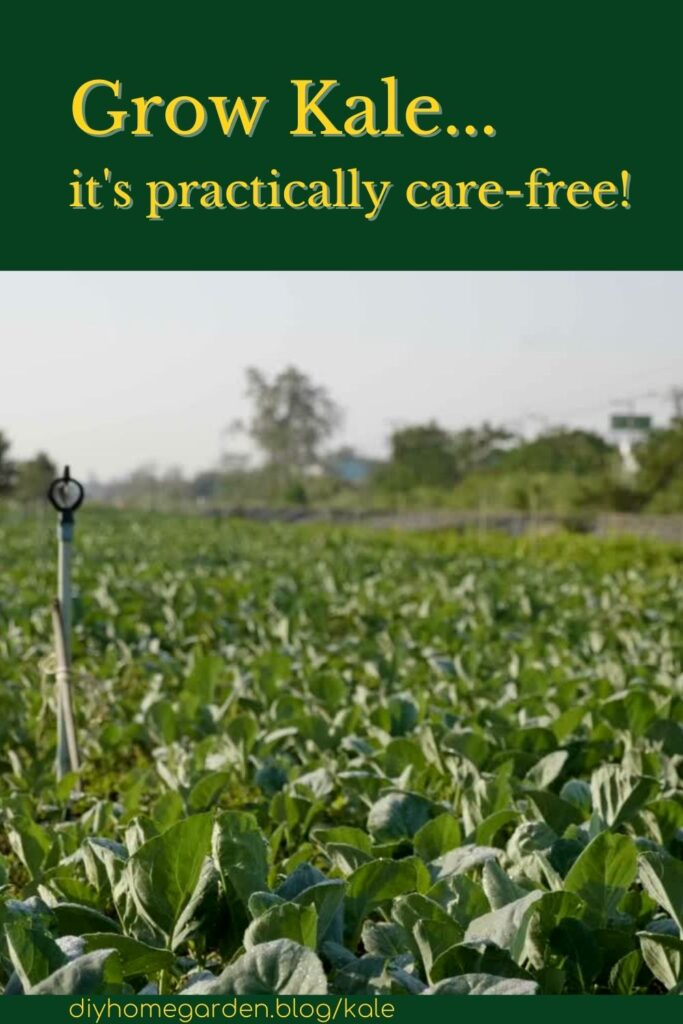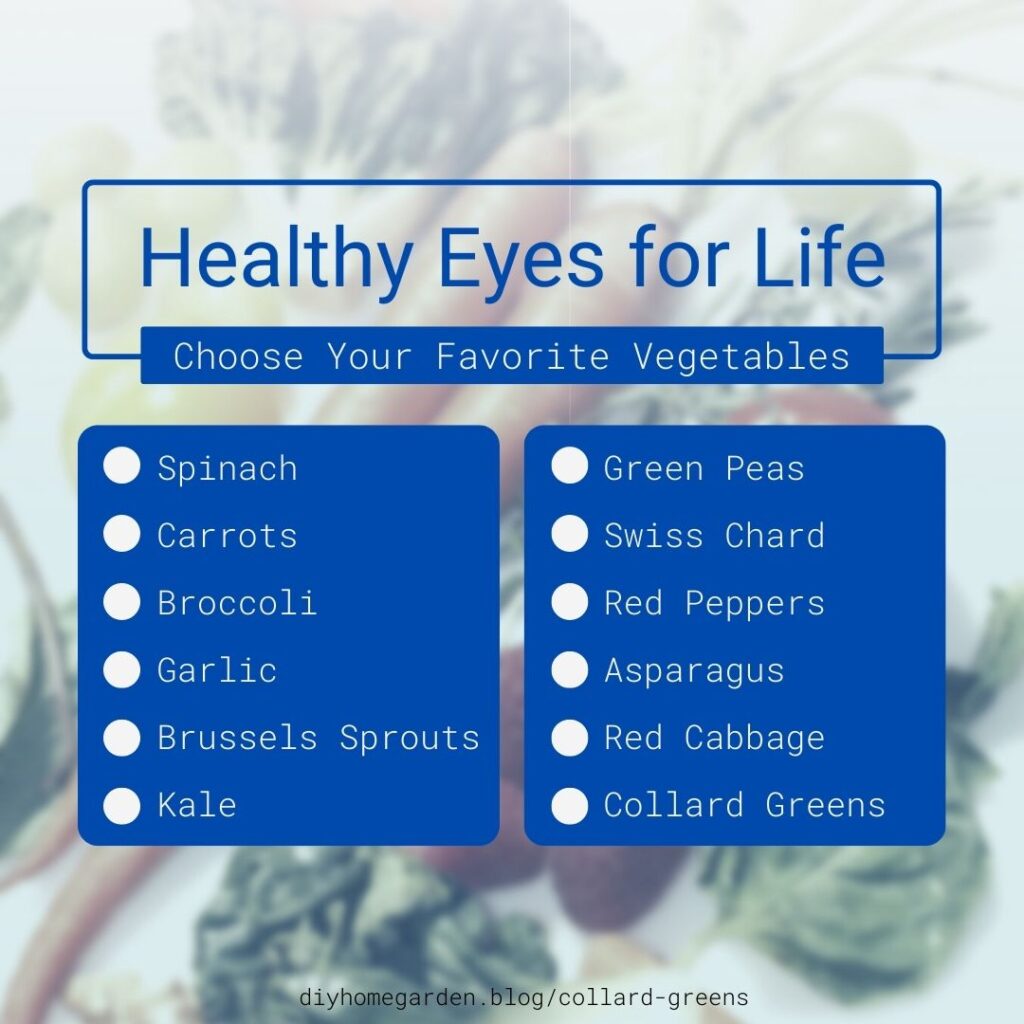Collard greens are a staple in Southern cooking, and for a good reason. This nutrient-packed vegetable is not only delicious but is also easy to grow.
Native to Africa, collards are the same family as cabbage, kale, and Brussels sprouts. The healthy, leafy green is a soul food favorite and is on the menu in many local restaurants across the southern United States.
They have large, dark green leaves that are slightly bitter in flavor with tough yet fibrous edible stems.
Collard greens are a cool-season crop, meaning they do best when planted in the fall or early spring.
In most parts of the country, you can sow seeds directly in the ground about two weeks before the last expected frost date if you opt for a spring planting. The challenge with a spring crop of collards is the heat withering them as spring moves into summer. Thus, most gardeners choose a late summer planting.
Start them indoors in pots about six to eight weeks before your last frost date to get a jump on the growing season.
Just be sure to harden off the plants before transplanting outdoors.
Collard-growing comes with numerous health benefits, as you may have guessed, but before we explore all that, here are the answers to some of the commonly asked questions about these leafy greens.
Frequently Asked Questions about Collard Greens
Are collards easy to grow?
Collard greens, like most brassicas, are relatively easy to grow as long as they have full sun and well-drained, fertile soil.
They are tolerant of a wide range of soils, from sandy to clay, but will do best in loamy soil high in organic matter.
Talking of brassicas…Are mustard greens brassicas?
Mustard greens belong to the brassica family as the collard greens, though they exhibit a slightly peppery flavor.
Both are a powerhouse of nutrients, including vitamins A, C, and K, and calcium and iron, and are often used interchangeably in recipes.
Can you plant brassicas two years in a row?
Planting the same crop in the same spot year after year can lead to nutrient depletion and soil-borne diseases.
Generally, it’s best to plant brassicas in a different spot every year or two. This will help keep your plants healthy and productive.
If you live in an area with a long growing season, you can plant brassicas in the spring and then again in the fall for a second harvest.
Just be sure to give them enough time to mature before the first frost in your area.
Can I plant brassicas every year?
Yes, you can plant brassicas every year as long as you rotate them to a different spot in the garden each year.

How long does it take to grow collard greens?
It takes about sixty to seventy days for collard greens to mature.
What month do you plant collards?
Plant collards in early spring for an early summer harvest; or late summer to early autumn for a late fall harvest.
Rule of thumb: Plant collards in late summer-early autumn for winter harvest in the south. Plant a little earlier—in the northern areas—for winter or fall harvest.
Do collard greens come back every year?
No, collard greens are annuals, lasting only for one growing season. For a new set of crops, consider sowing again the following year.
Is it OK to eat collard greens with holes?
Yes, it’s perfectly fine to eat collard greens with holes. These holes are usually caused by insect damage and don’t affect the taste or nutrition value of the greens. Tear away the healthy part of the leaves and discard the damage.
Are coffee grounds good for collard greens?
Coffee grounds contain nitrogen, which may help boost the growth of collards. However, too much can lead to leaf burn.
It’s best to use coffee grounds sparingly; mix it into the soil around the plants rather than spreading the grounds on the plants themselves.
How do I keep bugs off my collard greens?
One way to keep bugs off your collard greens is to plant them in a floating row cover. This will create a barrier between the plants and the insects, preventing them from getting to the greens.
You can also try using an organic insecticide such as neem oil or pyrethrin. These will kill the bugs on contact without harming the plants.
How do you keep worms from eating collard greens?
Not all worms will benefit your collards; a few, like the cabbage looper and common armyworm, will eat up the greens before you can.
You can prevent this by keeping the area around your plants clean and free of debris and using an organic insecticide like citrus oil or insecticidal soap.
Whenever possible, handpick the worms off the leaves.
Do deer eat collards?
Yes, though not as much as other brassicas such as kale, mustard, and turnips. They find the collards satisfying, especially after a frost owing to the enhanced tenderness of the leaves.
Consider fencing your garden or try a deer repellant to help keep the ruminants at bay.
Six Healthful Benefits of Eating Collard Greens
Collards are versatile; eaten raw, cooked, or pickled; they stay true to their flavor. They make an excellent replacement for lettuce in salads or wraps.
As mentioned earlier, collard greens are nutrient-dense but also low in calories, high in fiber, and vital antioxidants.
Consumed regularly, these greens may offer numerous health benefits, including the following:
1. Improved bone health
Collard greens are particularly rich in vitamin K and calcium, essential for bone health.
Vitamin K is essential for the production of osteocalcin, a protein that helps bind calcium to bones and teeth. Without enough vitamin K, calcium cannot be adequately utilized by the body, leading to a greater risk of osteoporosis.
2. Reduced risk of cancer
Studies have shown that the sulforaphane present in collard greens can help to protect against various types of cancer, including colon, breast, and prostate cancer.
This is thought to be due to sulforaphane’s ability to activate certain enzymes that help to detoxify the body and protect cells from damage.
3. Improved skin health
Collards are also a great source of beta-carotene, which the body converts into vitamin A—a vital ingredient for healthy skin, as it helps ensure the proper functioning of skin cells.
4. Anti-inflammatory effects
Collard greens contain sulforaphane, vitamins A and C, and several other compounds that have been shown to have anti-inflammatory effects—fundamental properties that may help reduce the risk of various chronic diseases like diabetes, arthritis, and heart disease.
5. Proper digestion
Collards are a great source of fiber, vital for a healthy digestive system.
Fiber helps to keep things moving along the digestive tract while also reducing constipation and other digestive issues.
6. Blood sugar control
The fiber and nutrients present in collard greens can help with blood sugar regulation—an extremely vital process in individuals with diabetes.
Their antioxidant contents further protect against the most common complications of diabetes, such as heart disease and nerve damage.

How to Grow Collard Greens
- As cool-season crops, collards do best in 60-65° F temperatures.
- You can start them from seed or transplant them from starter plants.
- If starting from seed, be sure to sow in well-drained soil about a half-inch deep and two inches apart.
- Water the seeds regularly until they germinate, within seven to ten days.
- Once the seedlings sprout, thin them out to about twelve inches apart.
- Water the plants regularly, especially during dry spells, and fertilize with a balanced fertilizer every few weeks.
- Harvest when the greens are six to eight inches tall.
- To harvest, cut off the leaves at the plant’s base or pick the entire plant by cutting it at the bottom.
- Collard greens are best eaten fresh but can as well be stored in the fridge for up to a week.
- For longer shelf life, blanch the leaves, then freeze.
The Takeaway on Growing Collard Greens
Collard greens are an excellent addition to any vegetable garden, not only for their nutritional benefits but also for their aesthetic value.
They grow well in many climates and can be harvested throughout the winter. Collards are high in fiber, vitamins A, C, and K, and minerals like calcium and potassium.
They also have anti-inflammatory properties, making them ideal for people with conditions like arthritis.
Give collard greens a try—you’ll love growing and eating them!

